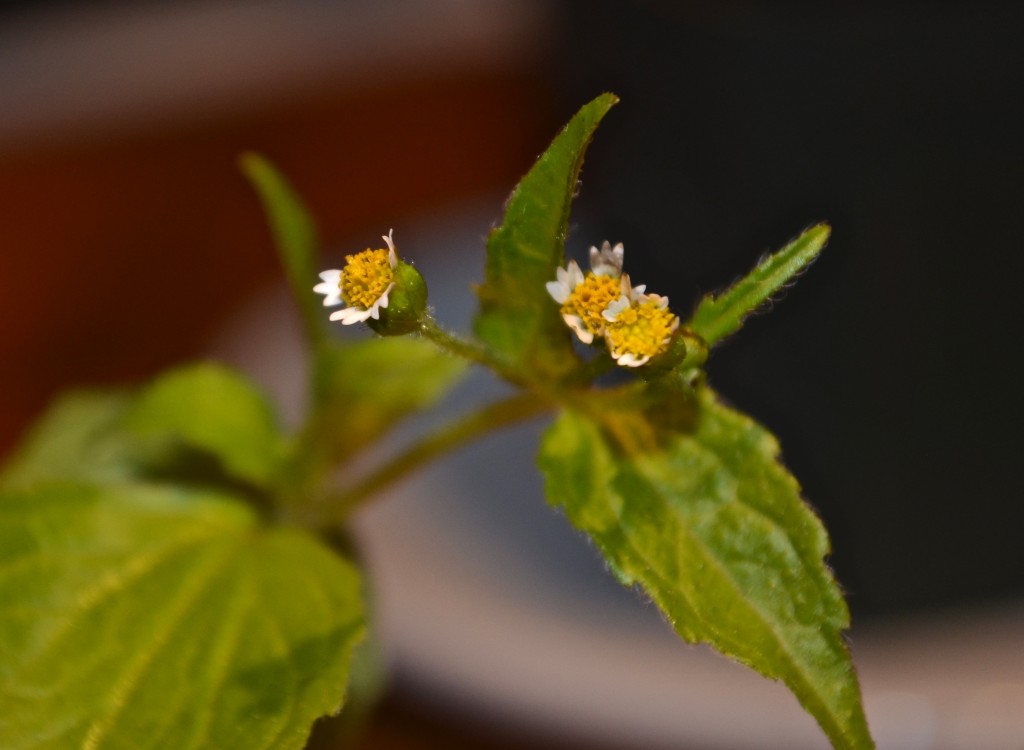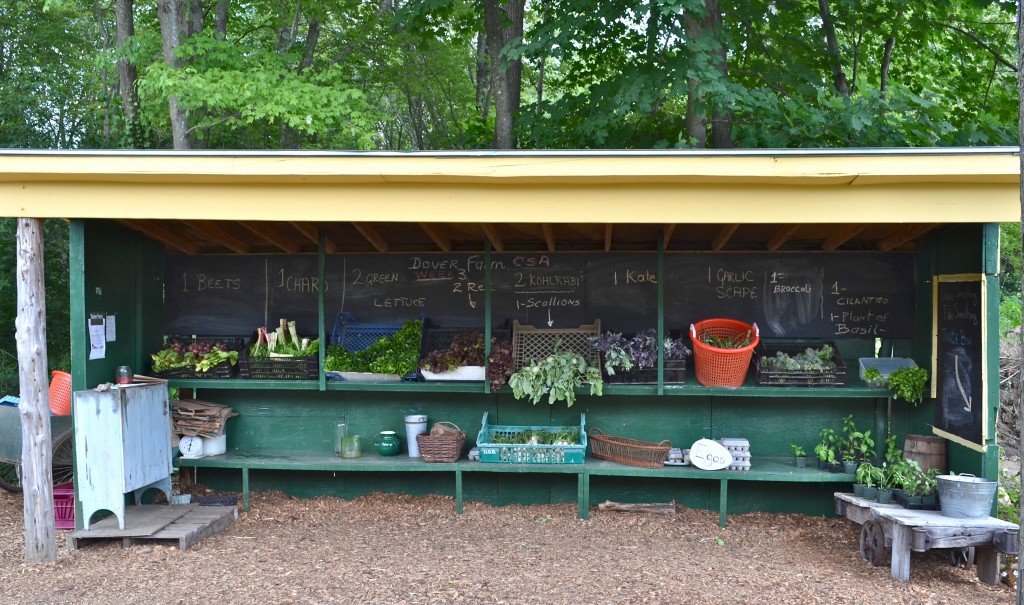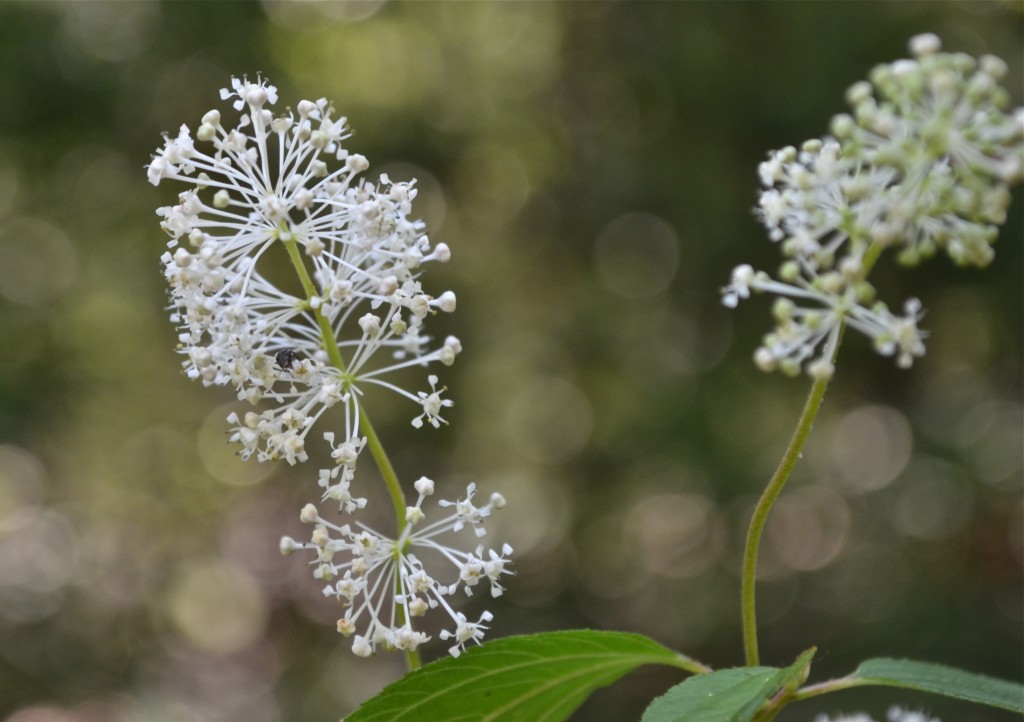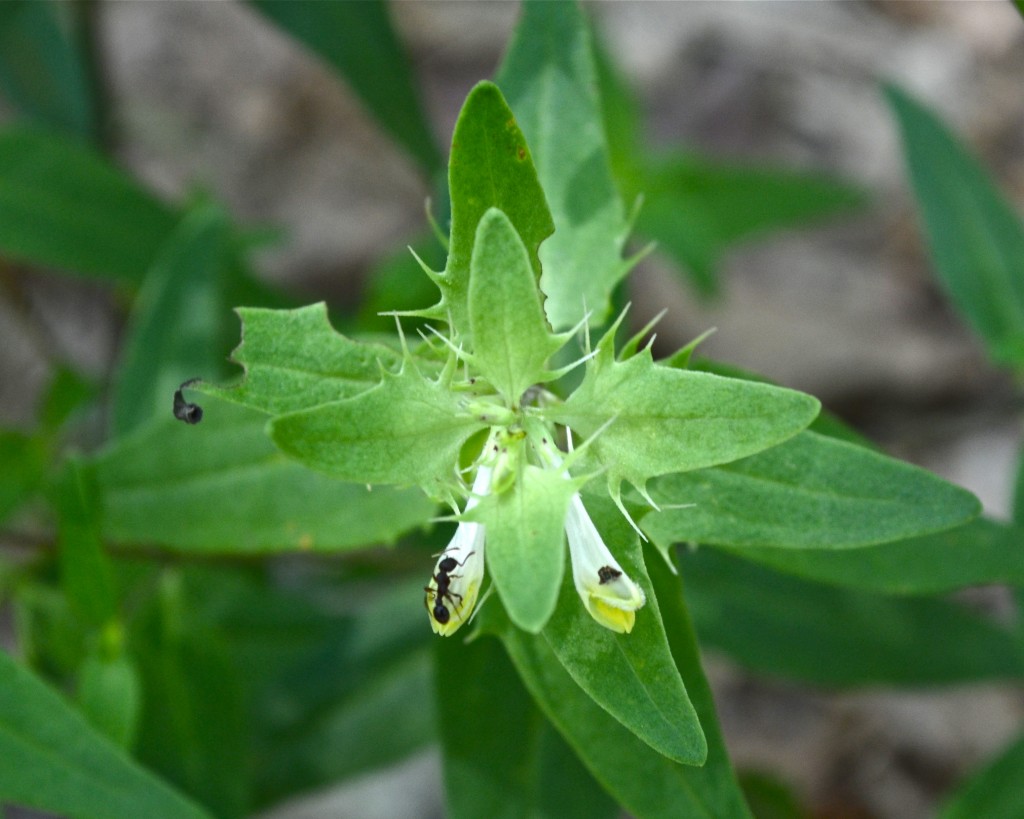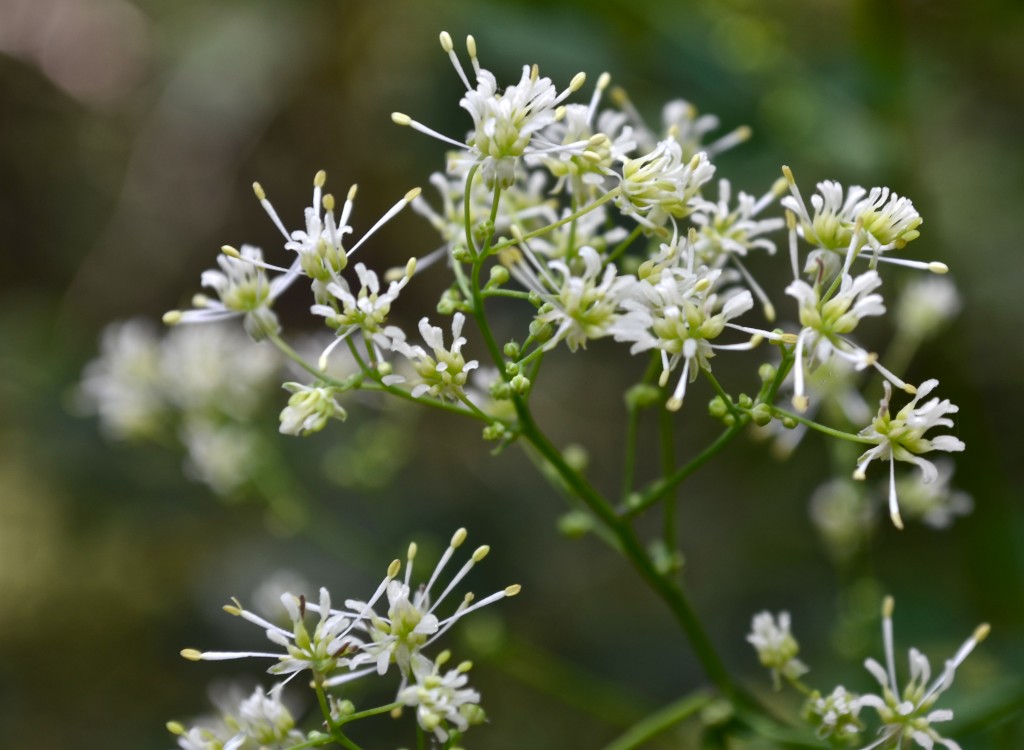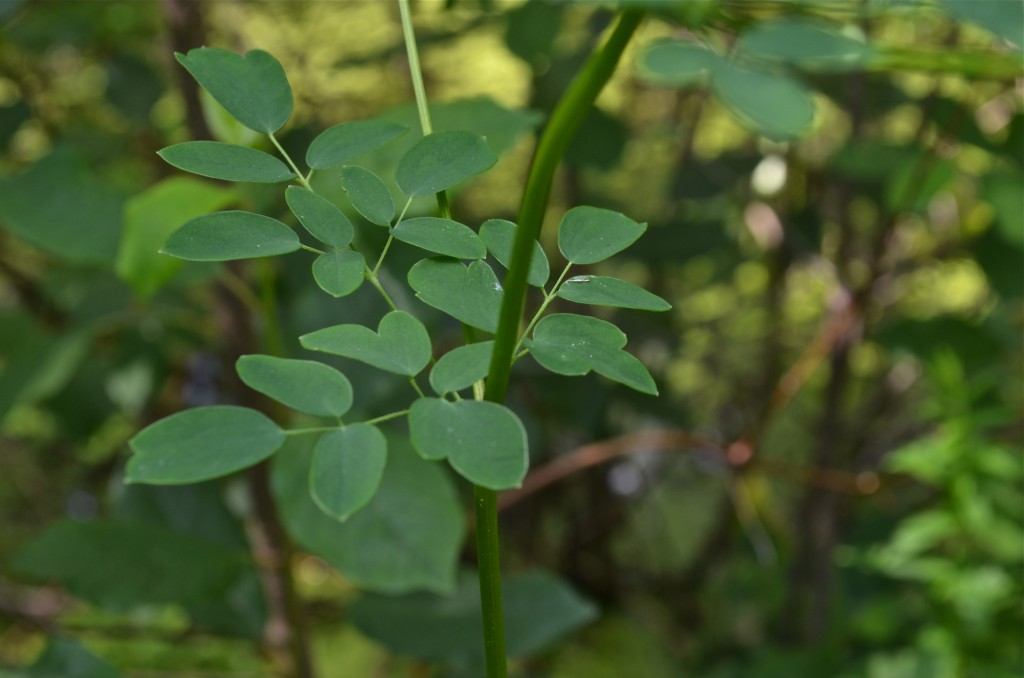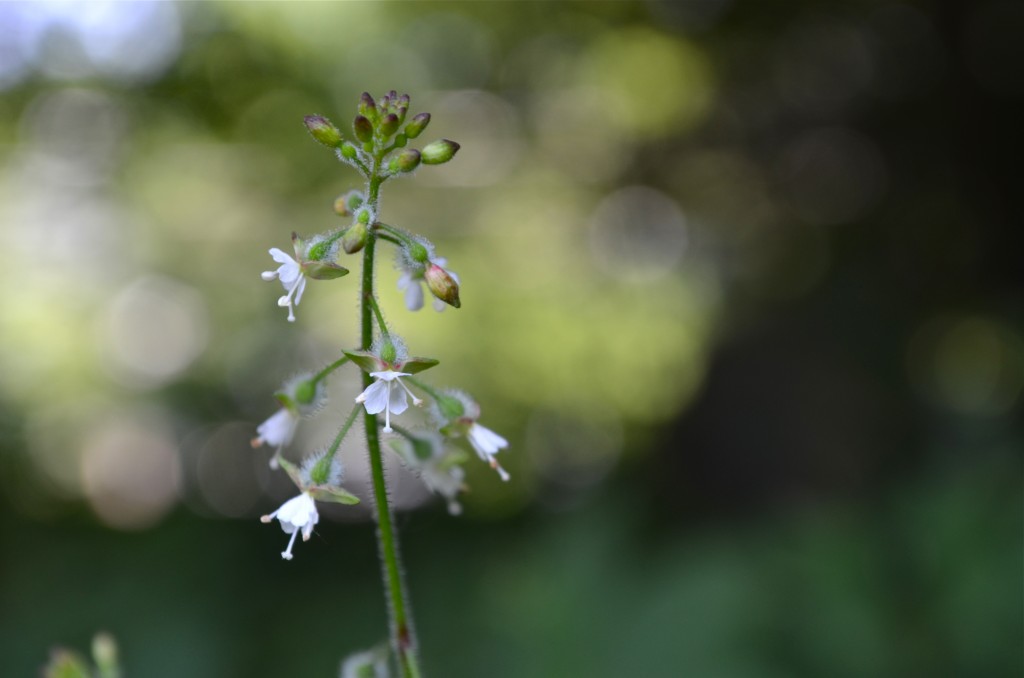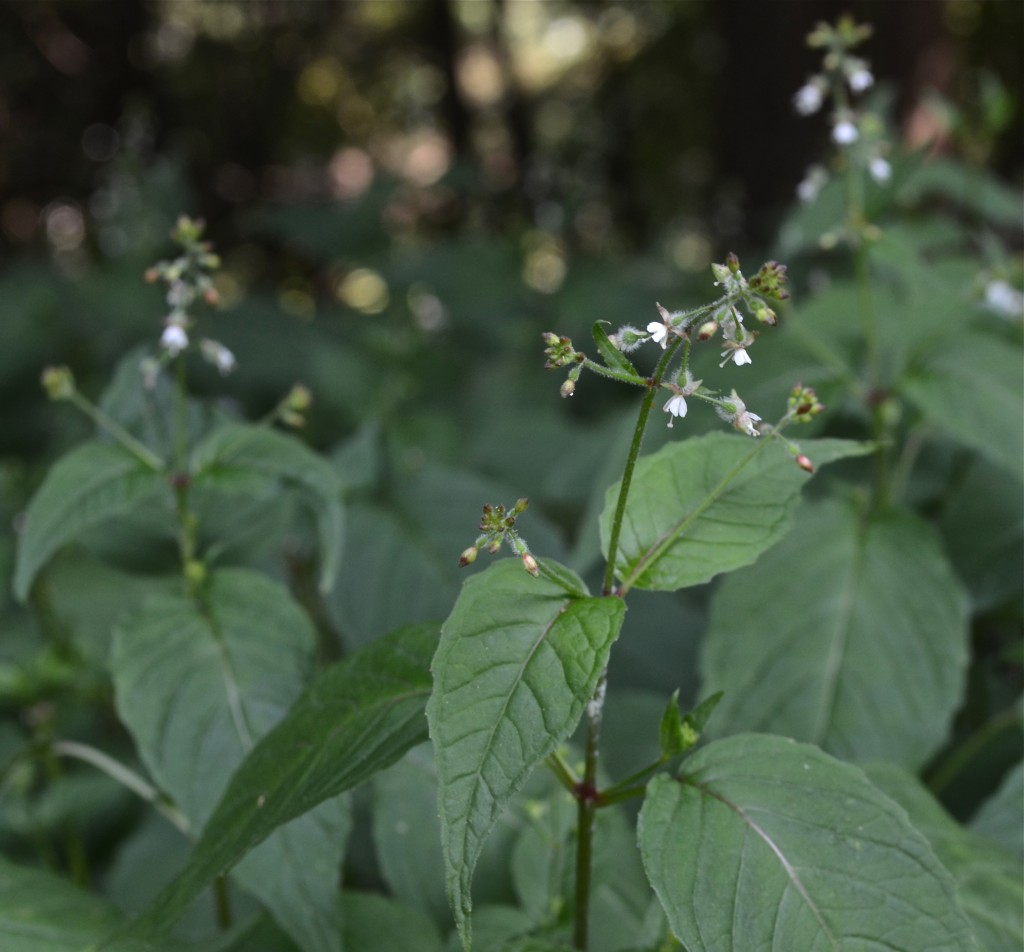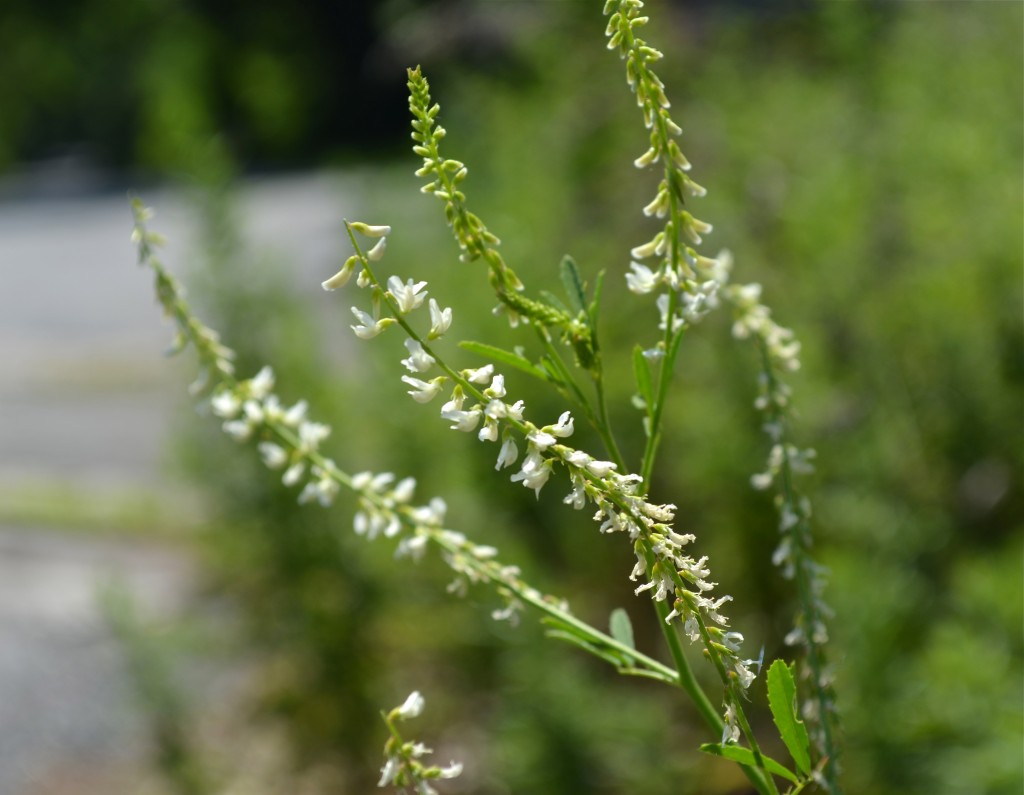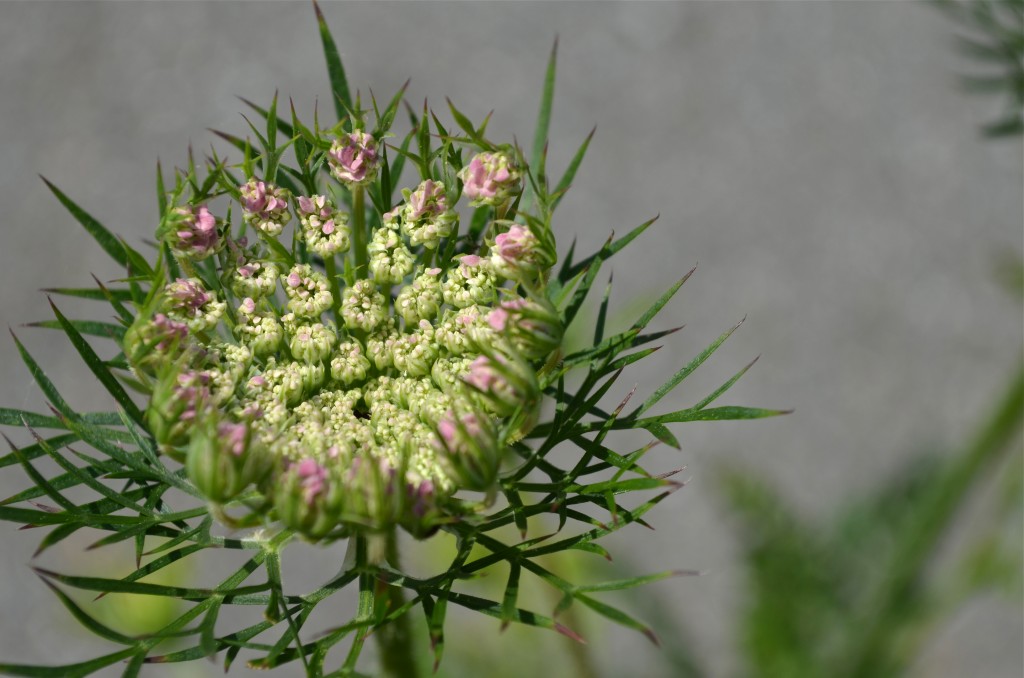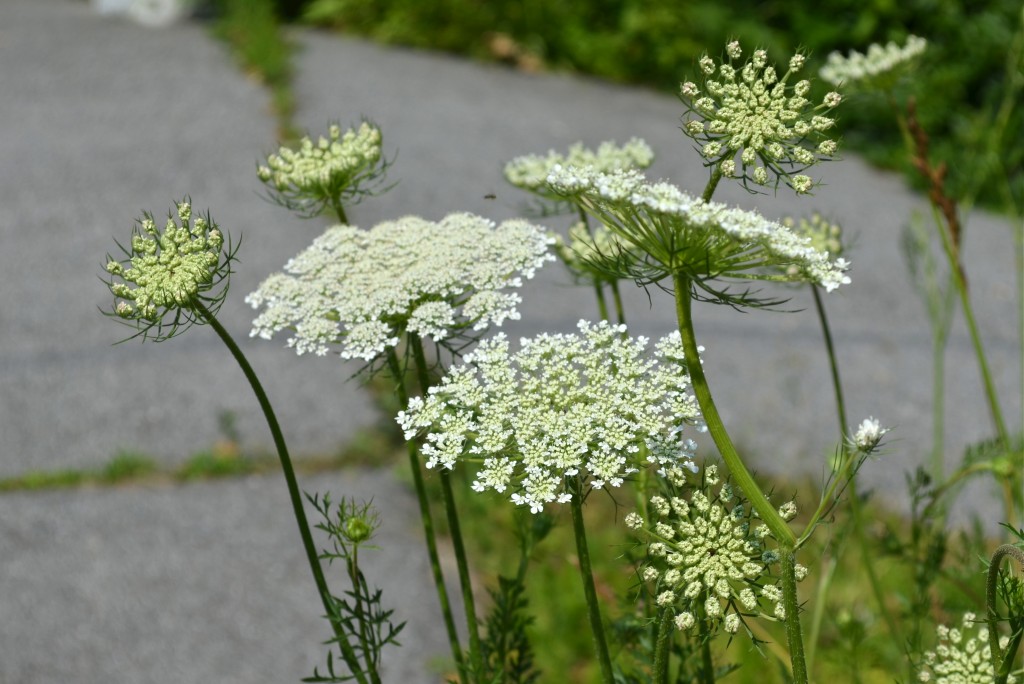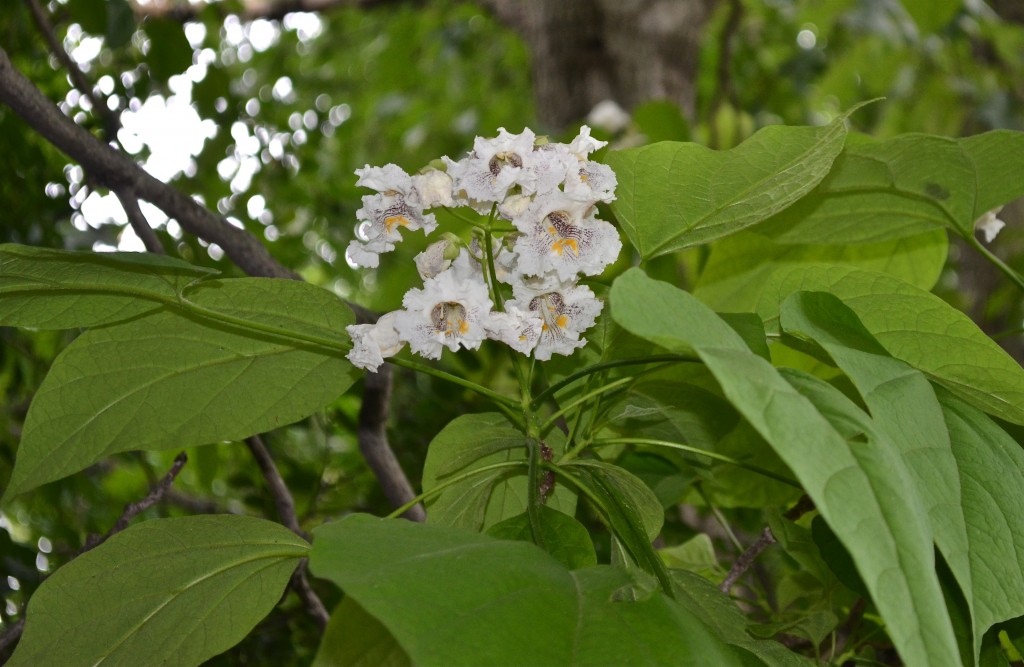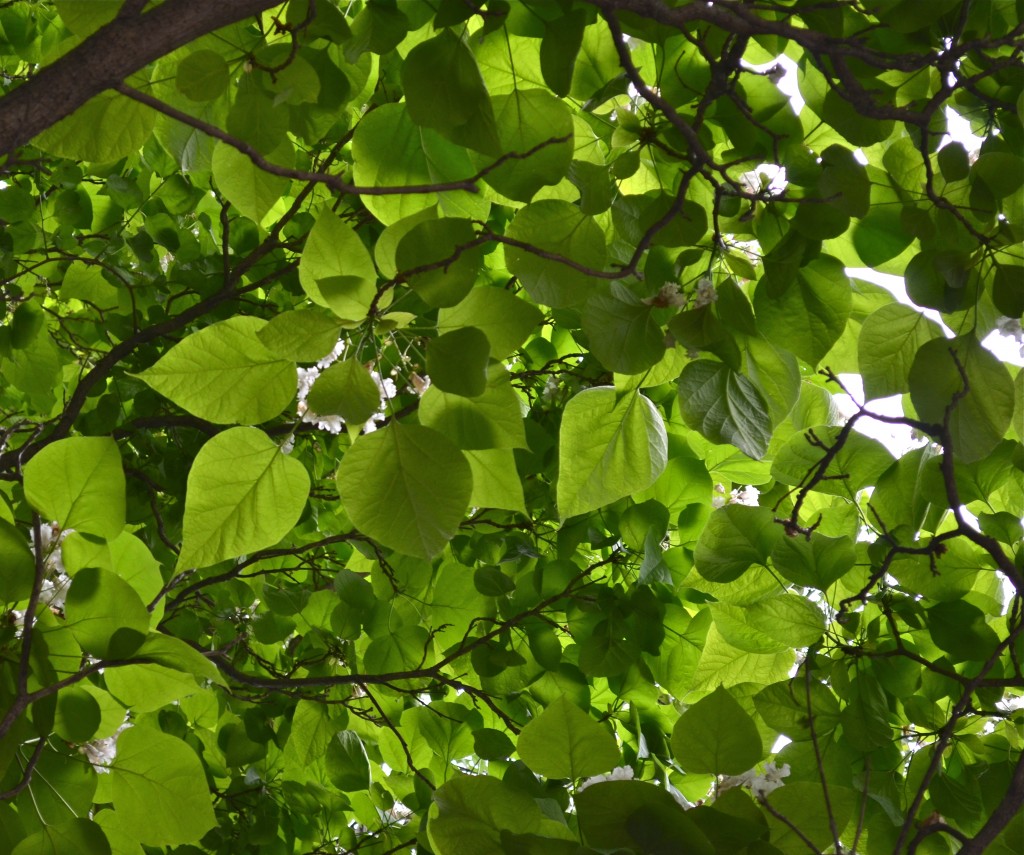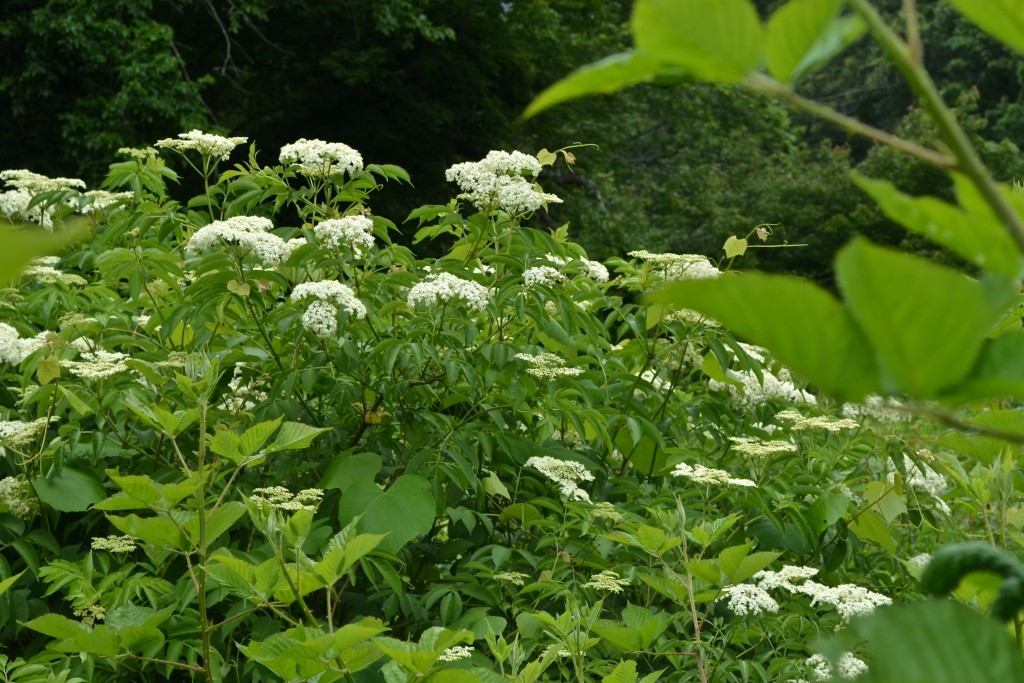We’ve been getting our vegetables from the Dover Farm. B cleaned the beet greens and found this sprig collected with them. Naturally he saved it for me to identify and I immediately swarmed onto it (do you need more than one person to swarm?) and figured out what it is. Daisy family. Native to Peru, brought to Britain in 1796 where it escaped to the wild. Sometimes in Britain the name Galinsoga turns into Gallant Soldiers, and from there becomes Soldiers of the Queen — an awfully noble name for a pretty humble-looking plant. Used as a spice herb in Colombia, leaves eaten in salads. The juice is a coagulant and antibiotic!
Galinsoga, Guasca, Gallant Soldiers, Potato Weed (Galinsoga parviflora)
Bonus picture: the farm pick-up area.

